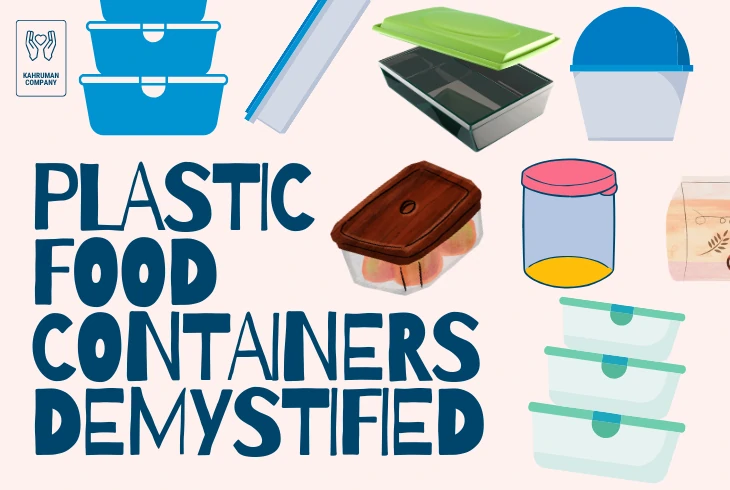A Brief History of Sugar Confectionery: From Ancient Treats to Modern-Day Confections
sugar confectionery market has a rich history that dates back thousands of years. In ancient times, sweet treats were reserved for the wealthy and were often used for medicinal purposes. Early examples of sugar confectionery include honey cakes, candied fruits, and nougat. As the popularity of sugar grew in the Middle Ages, so did the variety of chocolate and sugar confectionery products available, with marzipan, Turkish Delight, and sugar-coated almonds among the treats enjoyed by nobility. The invention of the printing press in the 16th century allowed for the mass production of sweets, making them more accessible to the general public. In the modern era, confectionery has become a global industry, with various products available in various flavors, shapes, and sizes. From classic favorites like gummy bears and lollipops to innovative new creations, sugar confectionery continues to delight people of all ages worldwide.
History of chocolate
Chocolate making can be traced back to the ancient Maya time. Chocolate has been known for its bitterness throughout history. With chocolate's presence in Europe and America, it soon became a much-loved item among people of all ages and backgrounds.
History of candy
The history of candy can be traced back to around 1500 BC. Ancient Egyptians and Greeks used to mix honey with fruits, nuts, spices, and flowers. The first modern candies were produced around the 16th century. In the early 19th, candies transformed into a sector by itself.
Confectionery production in Turkey
Sugar and candy use has always increased in the Turkish markets. This is due to the important place that such products occupy in society. Türkiye has been in a good position in terms of sugar production. It managed to achieve self-sufficiency. Türkiye is famous for its most loved Turkish delights known as "lokum" in Turkish and "halva." The young generation highly uses candy and fruit. Sugar products are especially popular during religious festivals. These include Ramadan, Eid, and national celebrations. People gift their families and friends at these events with candy and chocolates.
The Art of Making Sugar Confectionery: Techniques and Ingredients
Making sugar confectionery is a complex process that requires skill, precision, and a deep understanding of ingredients and techniques. The primary ingredients in sugar confections includes sugar, water, and corn syrup, which are boiled together to create a syrup. Additional ingredients, such as flavorings, colorings, and stabilizers, can also be added to create a unique taste and texture. Making sugar confectionery involves boiling the syrup to a precise temperature, then cooling and shaping it into the desired form. Different techniques, such as pulling, rolling, and molding, create a wide range of confectionery products, from hard candies and gummies to marshmallows and taffy. science of sugar confectionery is an art of expression of creativity and innovation. Master confectioners continue to push the boundaries of what is possible with sugar, constantly creating new and exciting products that delight and surprise consumers.
From Local Delights to Global Sensations: Exploring Sugar Confectionery in turkey
Turkey has a rich tradition of sugar confectionery that dates back centuries, and it continues to be an important part of the country's culinary heritage. One of the most famous Turkish sweets is lokum or Turkish Delight. This chewy, gel-like candy is made with sugar, water, cornstarch, flavored with rosewater or other essences, and dusted with powdered sugar. Another popular Turkish confectionery is aside şekeri, sugar-coated almonds often served at weddings and other special occasions. In addition to these traditional treats, Turkey has also developed a thriving modern confectionery industry, with many innovative and exciting products available for consumers. From artisanal shops selling handmade chocolates and truffles to mass-produced candies and gum, Turkey offers a wide range of sweet delights to suit every taste and occasion. Whether you are looking for a traditional Turkish sweet or something more modern and innovative, Turkey has something to satisfy your sweet tooth.
A brief history of Turkish Delight
Turkish delights are one of the most popular sugar and confectionery items in Türkiye. Their introduction dates back to the Ottoman Empire over 500 years ago. The traditional Turkish dessert was introduced to the west in the 19th century by the British. At present, the famous treat is presented as a gift during special festivals. Millions of people enjoy it all year round.
The Art of Making Turkish Sugar Confectionery: Techniques and Ingredients
The art of making Turkish sugar confectionery and chocolate is a highly skilled and intricate process that requires both expertise and creativity. The primary ingredients used in Turkish sugar confectionery includes sugar, water, starch, and flavorings such as rosewater, orange blossom water, or lemon. These ingredients are cooked together to create a thick syrup that is then poured onto a flat surface and left to cool. Once the syrup has cooled and set, it is cut into small squares or diamond-shaped pieces and dusted with powdered sugar or nuts. One of the most popular Turkish sugar confectioneries is lokum, also known as Turkish delight, which is made by adding starch and flavorings to the syrup before it is cooled. The mixture is then stretched and cut into bite-sized pieces. Another popular Turkish sweet is baklava, which is made by layering sheets of phyllo pastry with nuts and syrup. Making Turkish sugar confectionery requires precision and skill, as well as a deep knowledge of ingredients and techniques. The result is a wide range of delicious and intricate sweets that are enjoyed by people around the world.
Popular Turkish confectionery products
Chewing gum is a confectionery product that has seen a growing demand in recent years. This is due to the strong global gum businesses in the Turkish market. Since 2000, the gum market in Türkiye has witnessed a steady increase and variety. Gum sweets include sweet gum, sugar-free gum, and bubble gum.
Also, Türkiye is a leading country in dried fruits and nuts production. They are key ingredients in confectionery making. Dried fruits are used to make cakes, biscuits, and chocolates. These include dried raisins and dried figs. Nuts like hazelnut and pistachio are used in sugar confectionery items. Factories use nuts in producing Turkish chocolate and halva. Pistachio is also used in chocolate, halva, and Turkish delight production.
Famous Turkish delight products
Turkish delights inspired many Types of products. These include Turkish delight chocolates and candy bars. Examples are Cadbury Dairy Milk Turkish delight products, Big Turk chocolate bars, Thorntons Chocolate Favorite Flavors Bags (Turkish Delight), and Tesco Turkish Delight Thins.
Fry's Turkish Delight is a sub-product of Cadbury Dairy Milk, a chocolate-covered Turkish delight item. It was first introduced in the UK in 1914 by J. S. Fry & Sons. Also, Cadbury Turkish Delight byproducts include Fry's Turkish Delight Easter Egg.
Another Turkish delight chocolate type is Big Turk candy bars. Nestlé produces them in Canada, consisting of dark Turkish Delight coated with chocolate. Another product is Thorntons' Turkish delight flavored chocolate bars. This British chocolate brand dates back to 1911, when Joseph Thornton, a confectioner, launched a candy shop in Sheffield. Also, Tesco manufactures one of the famous chocolates-covered Turkish delights. It is a global retailer based in the UK and owned by Tesco PLC.
Some factors are behind the popularity of sugar and chocolate confectionery in the Turkish market.
- The improvement of the manufacturing process.
- The development of marketing tools.
- The development of distribution channels in Türkiye.
- The increasing national and global investments in the chocolate and candy confectionery sector.
- The variety of candy and chocolate products.
Traders in the sector started these. Thus, sugars and chocolate confectionery sales are performing well in the Turkish market compared to other countries.
Confectionery products exportation in Türkiye
The confectionery sector in Türkiye is a leading subsector in the food manufacture. Türkiye is one of the key exporting countries of confectionery sweets. Many factors led to the rise in confectionery production and exportation in the Turkish market. First is advanced technology. In that sense, Türkiye outdoes the Middle East, Balkans, Central Asia, and the Baltics. Second is the different products introduced to the Turkish market. This is because of people's shifting tastes. The third is the high quality of Turkish exports. Turkish food laws conform to the European Union food rules. Turkish candies also follow the standards stated by the World Health Organization. They also follow the rules of the Food and Agriculture Organization. Turkish food businesses apply global quality systems, such as HACCP or ISO 9000.
Türkiye's export value of confectionery products
In 2017, Türkiye's export value growth of sugar and chocolate items reached 1.8 billion US dollars. This constitutes 1.14% of Turkey's total export gain. The Turkish exports of candy and chocolate items increased steadily between 2009 and 2017. They reached a remarkable amount of 813 thousand tons. Turkish confectionery products are being exported to around 182 countries worldwide. The largest importer country of Turkish confectionery is Iraq, at over 24% of total exports. Iraq is followed by Saudi Arabia (6.2%) and the USA (5.3%). Türkiye's export value report of chocolates alone hit 458 million US dollars in 2017. Leading importer countries were Iraq, the USA, and Libya. Other major confectionery export products in 2017 were chewing gum, Turkish Delight, halva, toffees, and caramels.
Modern Innovations in Turkish Confectionery: Exploring New Trends and Flavors
While Turkish sugar confectionery has a rich history and tradition, modern innovations and new trends have also emerged in recent years. One of the most notable trends is the fusion of traditional Turkish flavors with modern techniques and ingredients. For example, a popular trend is to add spices such as cinnamon or cardamom and cocoa to traditional Turkish sweets like baklava, giving them a new twist. Another popular trend is the use of unusual ingredients such as saffron or pistachios in sugar confectionery, creating unique and exciting flavor combinations. In addition, there has been a rise in artisanal confectionery shops that specialize in handmade chocolates and truffles, offering a wide range of flavours and textures. Another trend is the increasing focus on health and wellness, with many confectionery business offering sugar-free or reduced-sugar options. Overall, the modern innovations in Turkish confectionery reflect a desire to stay true to traditional flavors and techniques while also embracing new ideas and trends, creating a diverse and exciting range of sweet treats.
What is the process of importing Turkish sugar confectionery?
If you are wholesaler and interested in importing Turkish sugar and confectionery products, there are several steps you can take to get started. The first step is to research and identify potential sugar confectionery and chocolate manufacture in Turkey that offer the products you are interested in. Once you have found a reliable supplier, you will need to determine the logistics of importing the products, including transportation, customs regulations, and taxes. This can be a complex and time-consuming process, but there are platforms available to help simplify the confectionery products market. Kahruman is a trusted platform for importing Turkish sugar confectionery, offering a range of opportunities including logistics support, sugar confectionery stock, photos and images, factory videos, samples, quality control, and customs clearance all for wholesale market. Kahruman works with a network of trusted suppliers in Turkey to ensure that you receive high-quality products that meet your specific needs. They also handle all aspects of the importing process, including transportation and customs clearance, allowing you to focus on your business. By working with a platform like Kahruman, you can streamline the process of importing Turkish sugar confectionery and ensure that you receive high-quality products at a competitive price.











